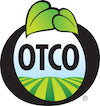Do You Need More Protein, More Times a Day? Research Says 'Probably'

You can’t throw a dumbbell these days without hitting someone talking about how much protein is the exact perfect most ideal amount for every human being on earth.
Of course, the only problem with that is there's no cut and dried rule that will apply to protein consumption.
So, just how are we able to determine the right amount for our own bodies on a daily basis?
Well, according to Dana Angelo White, MS, RD, ATC, a registered dietitian, and certified athletic trainer writing for the Food Network, there’s new research that says we may not be getting enough protein after all. Or more accurately, not getting it at the right time of day.
Angelo White points to some interesting science on protein and the wild variables most of our diets subscribe to.
While current dietary guidelines recommend about 0.8 grams of protein per kilo of body weight (about 0.36 per pound), that can vary anywhere from 55 to 100 grams of protein per day for some people. And according to Angelo White, even upping your activity level a smidge (you know, from throwing dumbbells at people talking about protein) can increase your protein needs.
Pregnancy, aging, lack of sleep, stress—all these things can throw our body out of whack and that may mean more protein requirements (pregnancy for sure).
Angelo White also points to a 2015 study published in the American Journal of Clinical Nutrition that suggests 20-30 grams of protein per meal may actually be most ideal as well as timing it right before or after a workout, and even before bed.
What science is also revealing is that a combination of proteins is also most ideal. While we often think of meat, poultry, fish, and eggs as the biggest or best sources of protein, but dairy, beans and legumes, whole grains, nuts, seeds, and even vegetables shouldn’t be overlooked.
Consuming a wide variety of proteins is helpful to the body in more ways than one: it ensures a wide range of amino acids so all 9 essential amino acid needs are met (there are 20 all total though). It also helps reduce exposure to naturally occurring toxins in foods (dubbed “anti-nutrients”)—things like phytates (found in beans, legumes, nuts, seeds, whole grains), protease inhibitors (soybeans, broccoli, potatoes, nuts), lectins (dairy, gluten, peanuts), glucosinolates (cruciferous veggies like Brussels sprouts, cauliflower, and kale—all of which do contain protein!), and oxalates (wheat, beans, nuts). Combining proteins, like whey and soy, may also help to optimize muscle-building and recovery.
So mix your proteins and eat them often, ideally at every meal or snack, especially pre- and post-workout or activity. You can easily incorporate protein into meals, whether it’s a lean cut of meat or fish, a lentil and quinoa veggie burger, or somewhere in between. For snacks, try adding seeds or nuts or nut butters to fruits or whip up a high protein smoothie with whey protein, soy milk (remember whey and soy work well together!) and add in hemp or pumpkin seeds, yogurt, even some almond butter for good measure.
Image: aria ziyai
Leave a comment
Comments will be approved before showing up.


